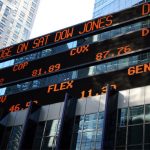Copper trimmed its weekly advance on Wednesday as investors weighed the possibility of Fed tapering its monetary easing program in September following the recent upbeat U.S. economic data. The metal was also pressured as inventories monitored by the LME rose last week.
On the Comex division of the New York Mercantile Exchange, copper futures for delivery in December fell by 1.58% to $3.252 per pound at 10:01 GMT. Prices held in range between days high of $3.314 and low at $3.243, the weakest level since August 30. The industrial metal trimmed its weekly advance to 0.4% after falling 3.6% in the preceding two five-day periods.
Copper received a strong boost recently on upbeat manufacturing data from the U.S. to Europe and China. The metal however retreated on Wednesday as investors took profits on recent gains amid ongoing uncertainty regarding the timing of Feds reduction of the $85 billion per month bond purchases. The highly anticipated Non-farm payrolls on Friday are projected to show the U.S. economy created more jobs in August than in July, indicating a consistent improvement of the labor market. According to a Bloomberg survey of analysts, the U.S. unemployment rate is likely to have remained flat at 7.4%.
Last Thursday, the Commerce Department reported that the U.S. economy grew more in the second quarter than previously estimated in July. The U.S. Preliminary (Revised) GDP marked a growth of 2.5% from a year earlier, compared to the flash reading of 1.7% published on July 31 and surpassing analysts’ expectations for a correction to a 2.2% advance.
Copper was also pressured as inventories monitored by the London Mercantile Exchange rose to 603 900 tons, the highest since August 6. Stockpiles rose last week for the first time in nine.
Kazuhiko Saito, an analyst at commodities broker Fujitomi Co. in Tokyo, said for Bloomberg: “An increase in LME inventories and mounting concern over the Fed scaling back stimulus are putting pressure on copper. Concern that the U.S. is moving closer to a military strike against Syria also hurt sentiment.”
The industrial metal was well supported in the last couple of days as upbeat manufacturing data from its top consumers boosted demand prospects. The Institute for Supply Management reported on Tuesday that U.S. factory activity grew at the fastest pace in 26 months. The institute’s ISM Manufacturing index surged to 55.7 in August from 55.4 in July, confounding analysts’ expectations for a drop to 54.0. This was the highest reading since June 2011.
Meanwhile, a sub-index tracking new orders rose to 63.2 from 58.3 in the preceding month, while employment slipped to 53.3 from 54.4 in July. Values above the neutral level of 50 indicate an expansion in the respective sector.
On Sunday, the Chinese National Bureau of Statistics reported that the country’s manufacturing Purchasing Managers’ Index surpassed forecasts for a jump to 50.6 according to a Reuters poll and rose to 51.0 in August, the highest since last April, from 50.3 in July.
Earlier on Monday, according to a separate private survey by HSBC and Markit Economics, the HSBC Purchasing Managers’ Index surged to 50.1 in August, marking a major improvement from July’s 11-month low of 47.7 in July and ending a three-month declining cycle. Chinese manufacturers signaled a slight expansion in growth that was based on improving market conditions.
In economic news from Europe, Great Britain’s Manufacturing CIPS rallied to 57.2, the highest since 2 1/2 years, surpassing expectations for a surge to 55.0. This was the biggest advance in nineteen years. July’s reading was revised upward to 54.8 from an initial reading of 54.6.
The general Euro zone’s Final Manufacturing PMI surpassed analysts’ expectations for remaining unchanged at 51.3 and rose to 51.4, indicating the the single currency bloc’s economic activity is consistently improving.





